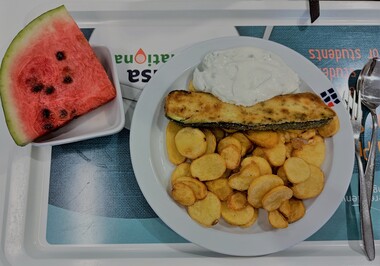
Back in my engineering college days, I remember eating the mess food(food served in our hostels) and feeling sad about the poor quality. I use to hate the food that was served so much that I learnt to eat fast(sometimes I will finish the meal in five minutes) for the faster I eat, lesser I will have to deal with the taste and quality of food.
Since then and ever since I got involved in the food industry, I have always wondered how difficult it will be to have a space serving affordable cum tasty food in a college. I have even tried to create concepts(in my mind) just for fun.
Forward it to today when I am in Germany visiting my friends for a month while they are studying in college, destiny brought me to their mess/ cafeteria or as they call it ‘mensa’.
While food served in our mess used to be in thali format with 2-3 types of sabji, rice, roti, pickle, onion(in the name of salad) and on lucky days papad or something similar for crunch, in Germany it is usually a single-pot dish served with a nice homemade sauce. Sometimes a meal is a combination of 2-3 items. Also on a particular day, there are 2-3 meal options (for both veg and non-veg) to choose from.
I like the idea of having multiple meal options to choose from each day. One-pot dishes with much more thick sauce on the side also make sense from the point of view we anyways mix everything together then why not do it in the beginning? Also, thick sauce/curry for some reason feels tastier to me. I think it also has to come from the fact that I really don’t like the concept of thali with multiple things to choose from to have everyday in a mess setup. Ultimately it always ends up with dal, dry vegetable, roti, rice with little chance of innovation. Also, I feel in a thali there are too many things I can taste, but because of that reason can’t really relish one particular flavor. From the chef’s point of view, I am wondering if a chef will find it convenient to have to make a lesser number of items per meal and hence can concentrate more on the taste of particular dishes.

Baked stuff zuchini with potato chips and cream 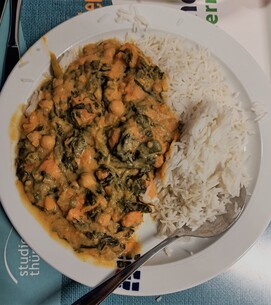
Veggies with chole, served with rice 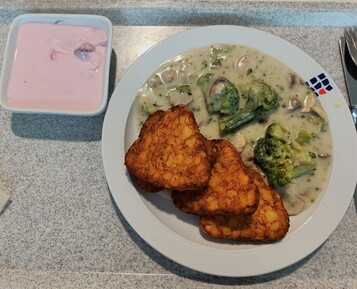
Vegetable tikki served with creamy vegetable sauce
Speaking of taste, I feel the real taste of dishes here is coming from not so over cooked vegetables with fresh herbs. Use of spices is always kept to its minimum, something even I too appreciate. Also on researching I have learnt that special attention is given on the quality of fat(such as oil) used. I personally have created healthy innovative Indian dishes using affordable ingredients and I do believe something like this is totally possible in Indian setup as well.
Another interesting change in terms of logistics for me was that anyone can choose to go to any menza, there are multiple of them and you can pay via your student card. At an additional cost, you can take add-on services such as salad, cheese, sauce, etc. Their is an app to track which dish is going to be prepared for lunch in which Menza and they can just go accordingly. I feel this makes each Menza more responsible for with multiple options to chose from for the students, they will have to perform their very best to provide the best food possible. A drawback with this is definitely due to the absence of knowledge about how many people will be turning up to eat each day, Menza would eventually end up making more food than what they can sell which will lift the price and also will lead to more food wastage. But if I compare it with how much food used to get wasted by students in my college each day coz of its bad quality(for we will just throw the food served to us in thali, I feel the ideas of menza here makes more sense.
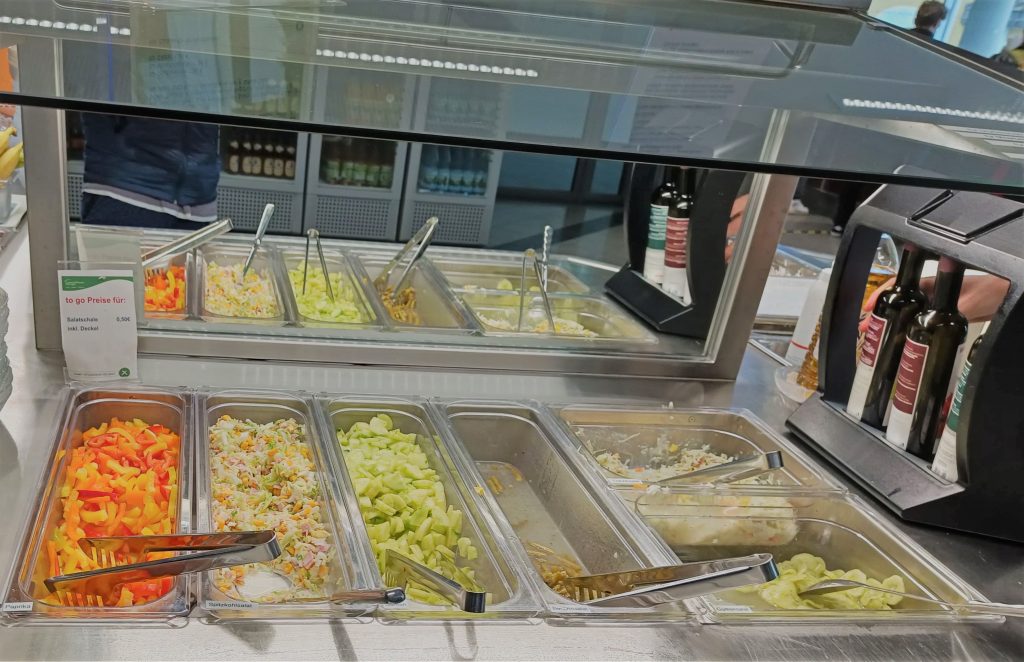
Add on salad and fruit counter 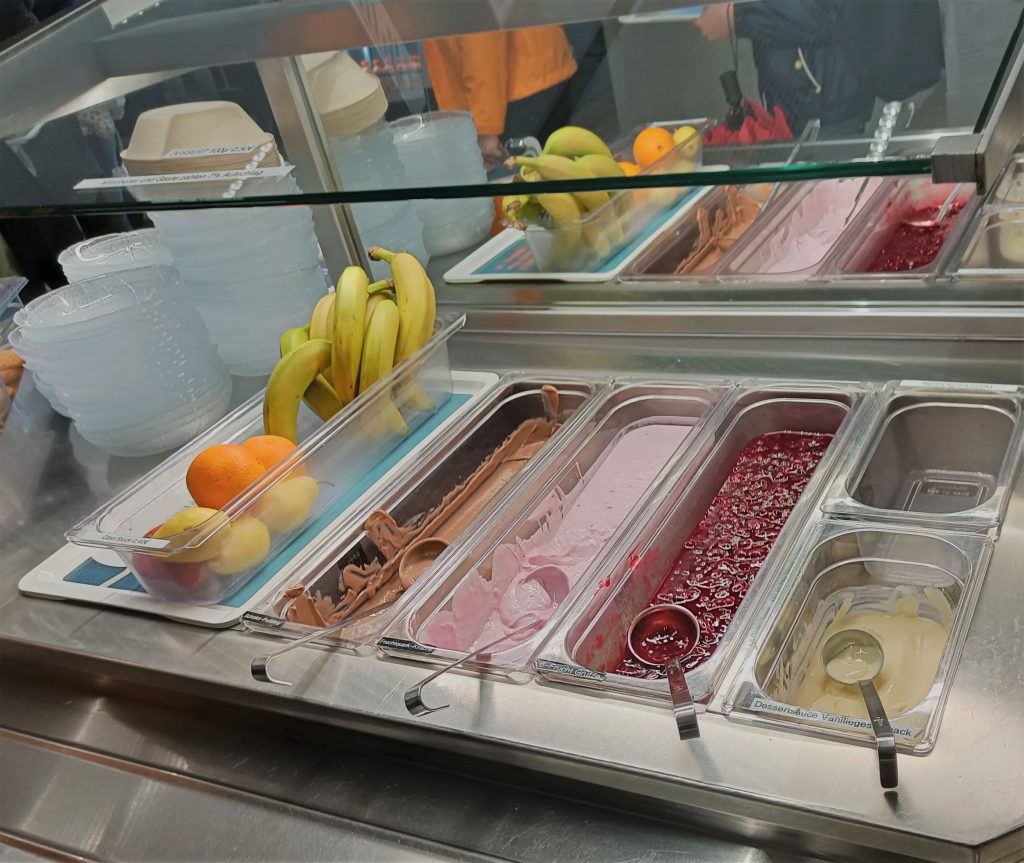
Fruits and dessert counter available for extra price 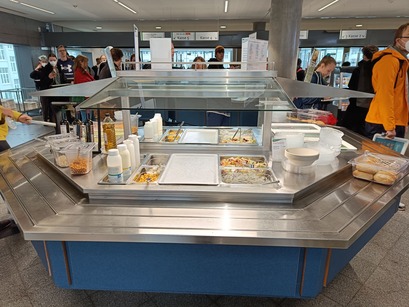
Do you know what, Students diversity is also respected and you can request for a particular meal to be prepared.
Interestingly, students who eat at the Menza don’t really feel super excited about the food that is been served to them, still they agree it is good quality food that is served to them at an affordable price.